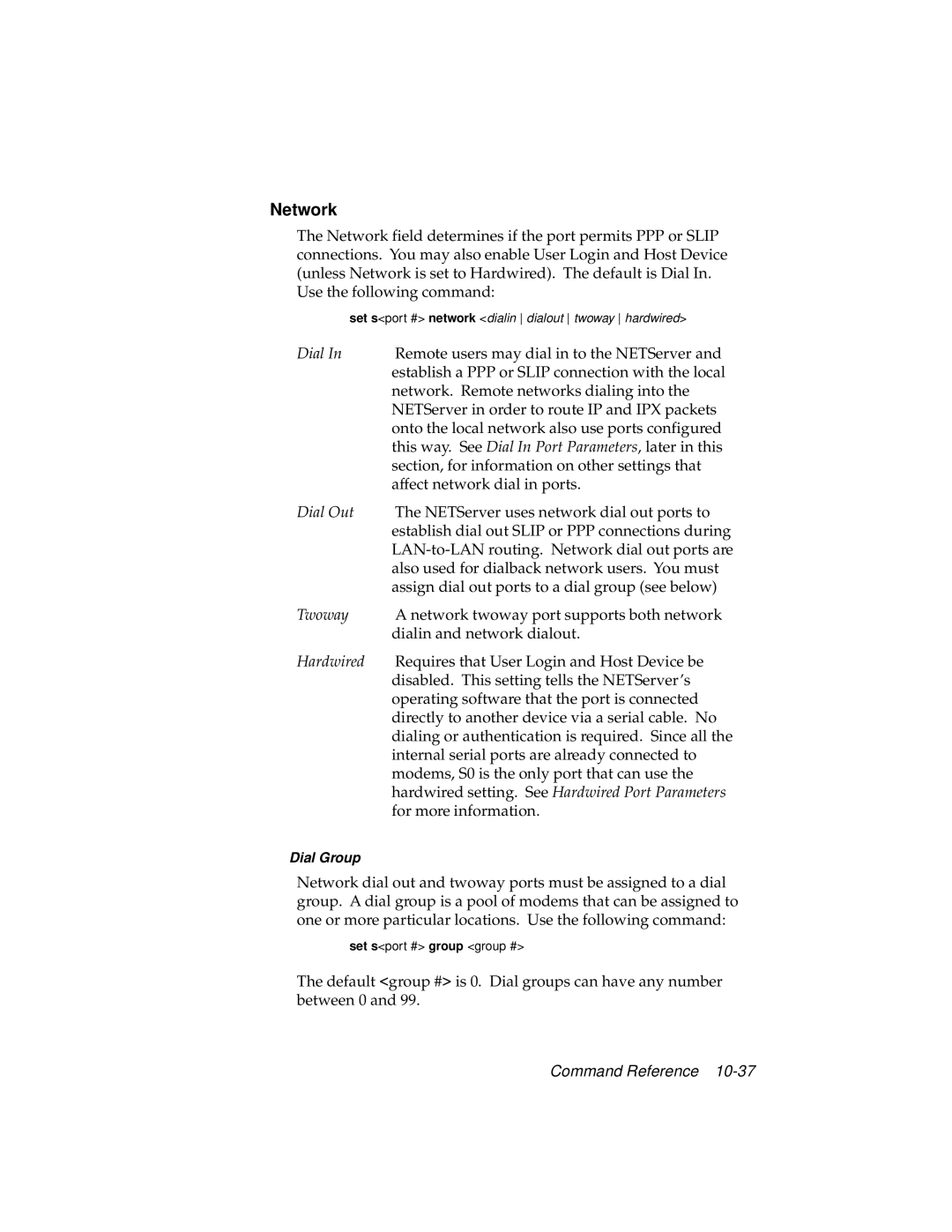Network
The Network field determines if the port permits PPP or SLIP connections. You may also enable User Login and Host Device (unless Network is set to Hardwired). The default is Dial In. Use the following command:
set s<port #> network <dialin dialout twoway hardwired>
Dial In | Remote users may dial in to the NETServer and |
| establish a PPP or SLIP connection with the local |
| network. Remote networks dialing into the |
| NETServer in order to route IP and IPX packets |
| onto the local network also use ports configured |
| this way. See Dial In Port Parameters, later in this |
| section, for information on other settings that |
| affect network dial in ports. |
Dial Out | The NETServer uses network dial out ports to |
| establish dial out SLIP or PPP connections during |
| |
| also used for dialback network users. You must |
| assign dial out ports to a dial group (see below) |
Twoway | A network twoway port supports both network |
| dialin and network dialout. |
Hardwired | Requires that User Login and Host Device be |
| disabled. This setting tells the NETServer’s |
| operating software that the port is connected |
| directly to another device via a serial cable. No |
| dialing or authentication is required. Since all the |
| internal serial ports are already connected to |
| modems, S0 is the only port that can use the |
| hardwired setting. See Hardwired Port Parameters |
| for more information. |
Dial Group
Network dial out and twoway ports must be assigned to a dial group. A dial group is a pool of modems that can be assigned to one or more particular locations. Use the following command:
set s<port #> group <group #>
The default <group #> is 0. Dial groups can have any number between 0 and 99.
